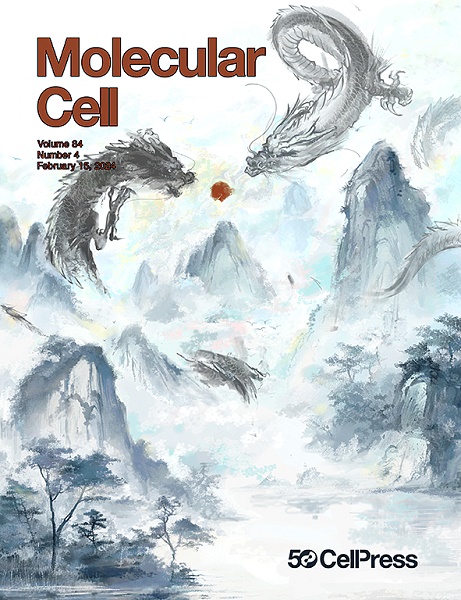Phosphorylation-dependent charge blocks regulate the relaxation of nuclear speckle networks
IF 14.5
1区 生物学
Q1 BIOCHEMISTRY & MOLECULAR BIOLOGY
引用次数: 0
Abstract
Nuclear speckles (NSs) are viscoelastic network fluids formed via phase separation coupled to percolation (PSCP). Intermolecular crosslinks of SRRM2 lead to the emergence of system-spanning networks, although the physicochemical grammar governing SRRM2 PSCP remains poorly decoded. Here, we demonstrate that SRRM2 is extensively phosphorylated within the intrinsically disordered region (IDR), creating alternating charge blocks. We show that this specific charge pattern does not markedly alter the condensation threshold of SRRM2 in cells. Instead, SRRM2 charge blocks intensify intra-network molecular interactions to modulate the material properties of mesoscopic SRRM2 condensates. We further identify casein kinase 2 (CK2) as the upstream enzyme to catalyze SRRM2 phosphorylation. Phosphorylation of SRRM2 IDR by CK2 facilitates NS relaxation, which is associated with enhanced efficiency of mRNA splicing to safeguard genome stability during DNA damage. Our findings reveal important regulatory mechanisms of charge blocks in modulating the material properties and functions of biomolecular condensates in human cells.

求助全文
约1分钟内获得全文
求助全文
来源期刊

Molecular Cell
生物-生化与分子生物学
CiteScore
26.00
自引率
3.80%
发文量
389
审稿时长
1 months
期刊介绍:
Molecular Cell is a companion to Cell, the leading journal of biology and the highest-impact journal in the world. Launched in December 1997 and published monthly. Molecular Cell is dedicated to publishing cutting-edge research in molecular biology, focusing on fundamental cellular processes. The journal encompasses a wide range of topics, including DNA replication, recombination, and repair; Chromatin biology and genome organization; Transcription; RNA processing and decay; Non-coding RNA function; Translation; Protein folding, modification, and quality control; Signal transduction pathways; Cell cycle and checkpoints; Cell death; Autophagy; Metabolism.
 求助内容:
求助内容: 应助结果提醒方式:
应助结果提醒方式:


